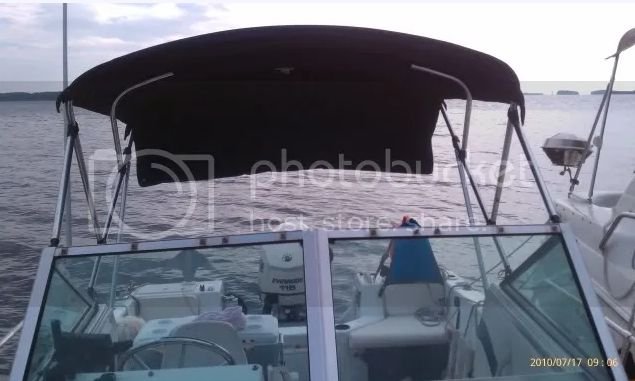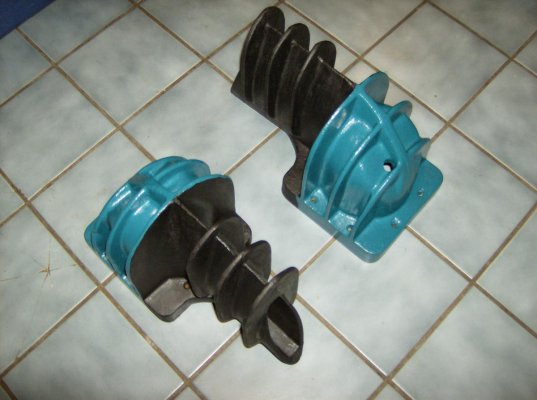wkearney99
Guru
- Joined
- Feb 17, 2018
- Messages
- 2,164
- Location
- USA
- Vessel Name
- Solstice
- Vessel Make
- Grand Banks 47 Eastbay FB
https://www.hccommunityjournal.com/article_2c3903cc-f1fb-11ea-9314-0f8c02b6e971.html
My heart aches for these folks, losing their little guy this way...
My heart aches for these folks, losing their little guy this way...
Cassandra Free, who was a Kerrville resident and a coach at Tivy High School, is living in Broken Arrow, Okla., now. And her family recently suffered one of the worst tragedies imaginable, the death of her youngest son at age 9.
She has shared their story with friends via Facebook, heading her Facebook post, “Make this go viral.”
“This is one of the hardest posts I will ever have to write, but this information needs to be shared.
“Andrew Brady (Free) died on June 6, 2020. He was only 9 years old. Most people don’t really know what happened and we haven’t been fully willing to publicly share until we had autopsy answers.
“The news outlets said that he fell off the dock and drowned. We did not dispute this without having our own concrete evidence, but we knew this wasn’t what happened. He wasn’t on the dock.
“His brothers were treated that night at St. Francis for ‘Acute Carbon Monoxide poisoning.’ Andrew has been swimming since he was two years old – he was a STRONG swimmer – and yet he didn’t even struggle.
“Now we know why.
“His COHb was 72 percent. His so-called ‘drowning’ was secondary to the fact that he never would have lived at that level. What does that mean? It means Andrew was not going to live regardless of what happened next. He was at the back of our Malibu Skier most of the day. Boats, even moving, create a backdraft of exhaust. That’s right. Exactly what I’ve typed: carbon monoxide exits the rear of the boat and drafts right back into the back of the boat.
“Backseat riders are especially vulnerable at low speeds and in long no-wake zones like the one we had to cross to return to the docks.”
Carbon monoxide is a colorless, odorless, and tasteless gas. Sources on a boat may include engines, gas generators, cooking ranges and space and water heaters. CO can accumulate anywhere in or around a boat, including on back decks, swim platforms or in the water around generator exhausts.
CO can remain in or around one’s boat at dangerous levels even if the engine or one nearby is no longer running.
“I didn’t know this. No one I know knew this. It’s called ‘open-air carbon monoxide poisoning,’ Free wrote. “Another friend looked into this and found that it can happen on other recreational vehicles like 4-wheelers.
“Our little Andy, our Dude, was probably slowly dying that afternoon/evening and we didn’t know it. He would’ve been tired. His head would’ve started to hurt. Sounds like too much sun after a long, physically draining day of wakeboarding, wake surfing and tubing.
“At 72 percent, or 720,000 parts per million carbon monoxide, his blood was no longer capable of carrying oxygen. Andrew crawled up onto the back edge of the boat while we were packing up at the dock and became unconscious and unaware of his impending death.
“We had no idea anything unusual was taking place. Had he not fallen over; had he made it into the car; even if he wouldn’t have passed at the lake, he would’ve been so severely brain-damaged that he likely would’ve passed away in his sleep on the way home. Even if he would’ve gone immediately to the ER at that time, he still would’ve died. No medicine could’ve saved him at his levels. There was nothing that could’ve been done at this point.
“So we have a little peace. He did not suffer – he fell asleep. We couldn’t have done anything differently with the knowledge we had.
“But everyone else can. Online boat forums will say this risk is minimal, or an ‘old wives’ tale,’ that it just doesn’t happen.
“You have to search for this information to find it. For sure, used boats do not come with this warning. But do you want to risk that your child falls into this category?
“Now you know, at the loss of our precious child, that it can happen. It may be a one-in-a-million chance, but it exists. It happens in minutes – sometimes in 60 seconds. Andy was smaller than his brothers (ages 13 and 15). They were moving around the boat more than he was. They were at slightly less risk than their youngest brother.
“But we could’ve lost all three of our children that night. As hard as it is to swallow, we were fortunate – fortunate that Andy doesn’t have to spend his life on life support, fortunate that his brothers lived.
“It still leaves a bad taste in my mouth.
“All of this information was confirmed by a doctor friend and by the Tulsa County Medical Examiner’s Office. I’ve been assured that my baby was so far gone that he did not cry out for me in his mind as he died. He went to sleep and that was it.
“I always hated restrictions enforced by the government – inspections, registrations and mandatory recalls that affected vehicle performance. But there is a purpose. Cars, street motorcycles and airplane manufacturers are required to notify registered owners of issues that can impact human life. Boat manufacturers do not.
“In the past 15 years, we’ve owned four registered boats and four registered personal watercraft. We’ve never received a notice of any dangerous conditions.
“But as of 2010, outside sources began to seriously investigate/test potential watercraft issues. Many state the numbers of the CO deaths on the lakes are skewed – skewed because they’re reported as heart failure or drowning.
“If you search online hard enough, you can find this, but who would ever think to research? Now you can research. And now I know that boat manufacturers do know of the dangers, and they’re not being proactive to help people stay safe.
“They make further modifications on newer models, but do not notify owners of used boats. The CDC researches it, but no one has asked that boats get annual exhaust inspections, and be retro-fitted for human safety when solutions are available.
“And it turns out there are solutions available. A boat repair shop would tell you there’s nothing wrong with my boat, but clearly there is.
“This needs to change.
“Don’t let Andy’s death be in vain. Educate yourself, and your friends and family. I do not want anyone else ever to experience what I am going through.
“I’m begging you, please share this!”
News reports about Andy’s death said it occurred at Eufaula Lake in MacIntosh County, Okla., just south of Interstate 40; and the family lives in Broken Arrow, near Tulsa. Andy was taken to St. Francis Hospital, Tulsa.
Local responses
Sharon Keith, in charge of the Emergency Room at Peterson Regional Medical Center, said she has never known of a case of carbon monoxide poisoning presented for treatment here.
But she knows the Free family, as her photographer-husband Mike took pictures of the boys when they lived in Kerrville.
A game warden assigned to Kerrville’s Texas Parks & Wildlife office, and the Kerrville Fire Department’s EMS director said their training hasn’t included information on the dangers of carbon monoxide poisoning, not even with the KFD dive team; and they know of no cases encountered in their work on area lakes.
In the Kerrville area, motorized watercraft aren’t allowed in the Guadalupe River in Louise Hay Park or on Nimitz Lake, but people can use them on Ingram Lake.
Ben M. Rosario, a “vessel examiner” from the U.S. Coast Guard Auxiliary in San Antonio, has visited Kerr County to distribute safe boating tips and users’ responsibility booklets to the public on occasion, including at Upper Guadalupe River Authority “River Cleanup Days,” Tara Bushnoe said.
Two handouts are titled “Safe Boating Tips for Anglers, Hunters & Campers” and “You’re in Command – Boat Responsibility.”
In the first, a page titled “Dangers Astern” has carbon monoxide poisoning information and warnings on three-fourths of that page.
In the other 14-panel folded brochure, two panels list symptoms, warnings and protective steps.
It says early symptoms of CO poisoning can be confused with seasickness or intoxication, therefore those affected may not get needed medical attention.
Boat “captains” should have marine-grade, properly maintained CO detectors on board, and properly tuned engines; treat symptoms (headache, nausea, weakness and dizziness) as CO poisoning as quickly as possible; and take immediate action to ventilate fumes, by heading the boat into the wind and opening hatches and other “ports” for ventilation.


